Dolphin Engine Room
Engine Room
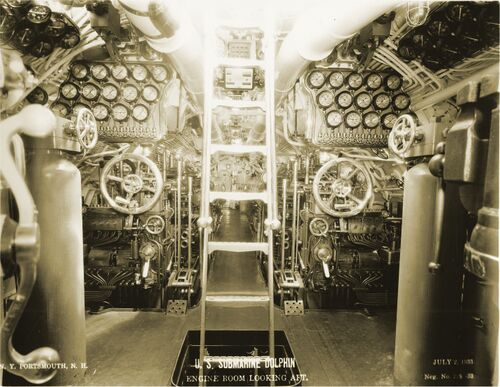
Second thing is the ladder from the deck access hatch passes through an opening into the lower engine room. Unfortunately, there are no photos of this lower engine room to allow us to know what was in this space.
The next thing that becomes apparent is the forward faces of the two huge MAN diesels. These engines were license built MAN derivatives, with six cylinders running on a four stroke cycle. They were rated at 1,750 hp. These are direct drive engines, in that the crankshaft is connected directly to the propeller shaft through a clutch. The large wheels are most likely the throttles for increasing and decreasing the engine speeds. The gauges give vital information into the performance of all the cylinders and pressures.
Flanking the ladder, at the front of the engines, are two large clutch handles for engaging and disengaging the shafts from the engines. Note the angled foot plates for the Motor Machinist Mates (later to become Enginemen) to brace a foot against to gain the leverage needed to pull the levers.
Seen through the rungs of the ladder are the engine air inlet and exhaust outlet open/shut indicators, plus shaft RPM counters.
US Navy Photo Contributed by Roger Torgeson
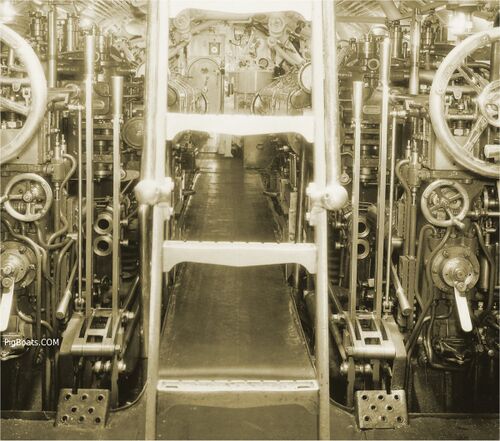
US Navy Photo Contributed by Roger Torgeson
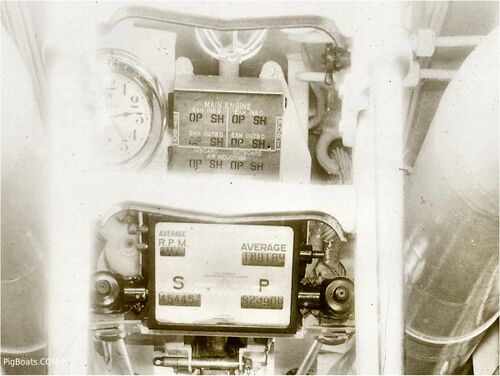
US Navy Photo Contributed by Roger Torgeson

US Navy Photo Contributed by Roger Torgeson
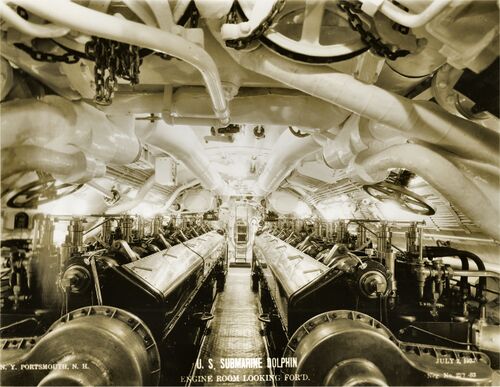
With both engines running at full power the noise level in this space was beyond comprehension. It was impossible to talk to other crew members, so they used a series of hand signals to communicate orders and instructions.
US Navy Photo Contributed by Roger Torgeson
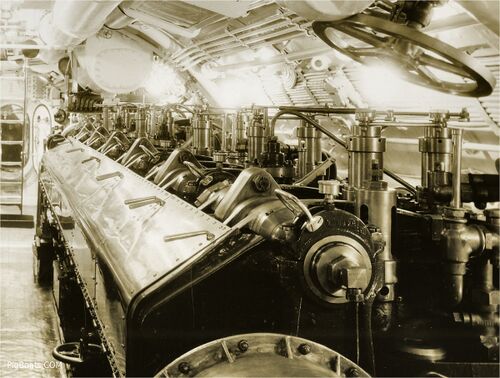
US Navy Photo Contributed by Roger Torgeson

The large articulated rod in the upper left portion of the view is the mechanical linkage for the stern planes. It ran from the control room all the way aft to the aft torpedo room. If the electrical controls for the planes failed, they could still be operated through this mechanical linkage.
US Navy Photo Contributed by Roger Torgeson
Page created by:
Ric Hedman & David Johnston
1999 - 2023 - PigBoats.COM©
Mountlake Terrace, WA, Norfolk, VA
webmaster at pigboats dot com
